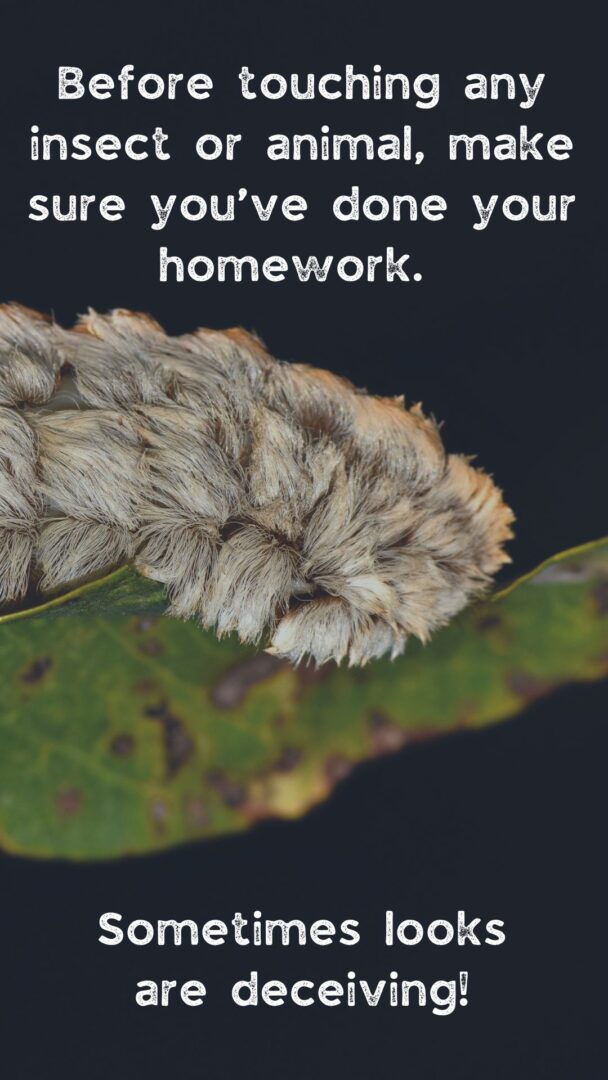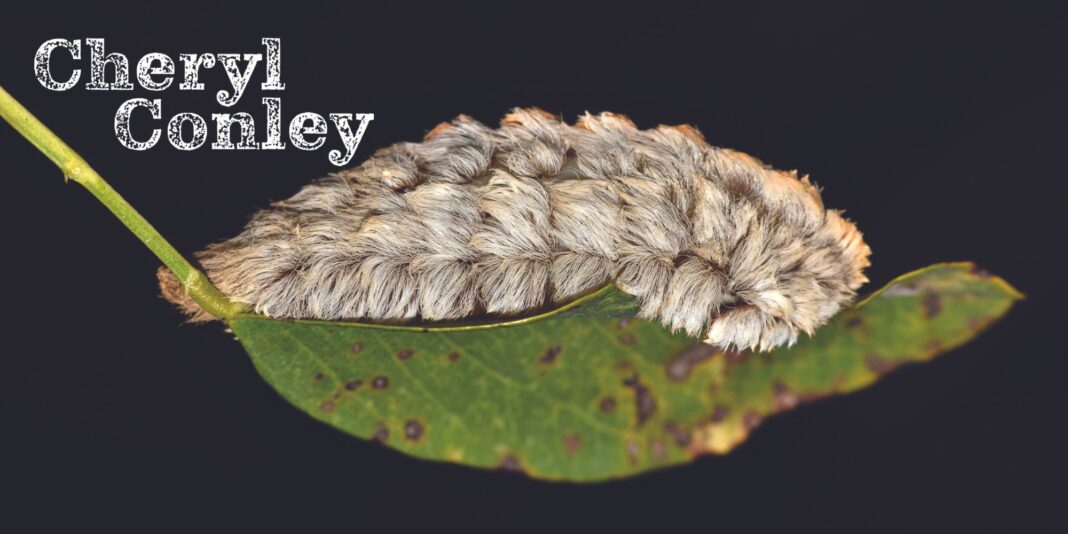Look But Don’t Touch!
Lots of names for such a little thing. They are more formally known as the Texas southern flannel moth Megalopyge opercularis. They are only about an inch to an inch and a half long, are tear-drop shaped, are covered in a thick coat of tan to grayish white hairs and are most active at night. The head and legs aren’t visible from the top. They are one of the most toxic caterpillars in North America and can be found on the east coast from New Jersey to Florida and as far west as Texas.
The life cycle of the asp is egg to larva (caterpillar) to pupa to adult. The first stage of the life cycle is the egg. Eggs are laid by adult females in rows or clusters on twigs or leaves and are covered in hairs. A tiny caterpillar grows inside the egg. As the larvae (caterpillar) grow, they become more hairy. Once they hatch, their main job is to eat and grow. During this time, they will shed their skin 4 or 5 times. When fully grown, it stops eating and spins a cocoon as a protective cover for the pupa. The cocoons are very tough and often remain on the twig long after the moth has emerged. The life cycle is now complete and it starts again when the female lays eggs.

Beneath the soft hair are tiny venom-filled spines and when brushed against the skin, they produce a very painful sting. Some describe the pain as excruciating. The pain can radiate throughout the entire body. In some, the sting can also cause nausea, headache and abdominal pain. What should you do if you get stung?
• Put tape over the wound and quickly pull it off to remove any spikes.
• Wash the area with soap and water.
• Apply an ice pack which will help numb the pain.
• You can take antihistamines to help with pain and swelling.
• For more severe symptoms, see a physician.















